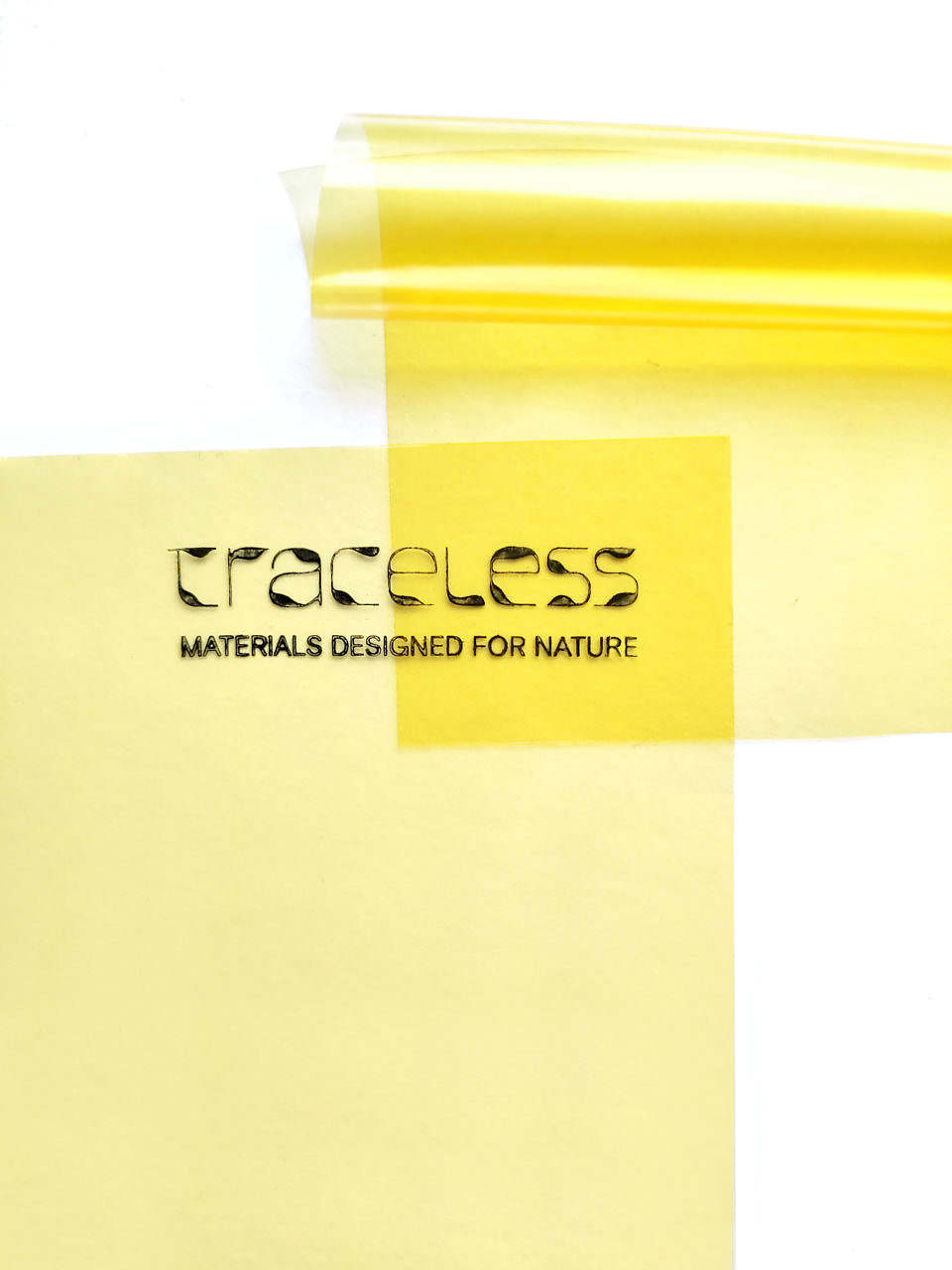

79% of all plastics ever produced are still in landfills or swim in our oceans. As they are not compostable, they lead to serious environmental and marine pollution. A declared goal of the EU Plastic Strategy is for all plastic packaging to be recyclable or reusable by 2030 – but for products that easily end up in the environment, we need a material solution that is fully and quickly degradable in nature. So far, close to 0% of the plastics currently produced are degradable in the environment. On top of that, the EU plastic tax will cost 800€ per ton of virgin plastic from 2021 onwards.


The Hamburg-based start-up traceless materials has developed a holistically sustainable alternative for plastics and bioplastics that is fully compostable in nature, contributing to solve the global plastic pollution.
traceless developed an innovative technology that for the first time allows to use agricultural industry by-products to produce storage-stable films, rigid materials and coatings that provide the beneficial properties of plastics while being fully compostable in the environment. While bio-based, traceless materials do not compete with food production, thereby preventing land-use-change. In contrast to conventional (bio)plastics, they do not need any harmful additives, solvents or chemicals and have up to 87% lower CO2 emissions.
Being neither chemically modified nor synthetically polymerized, traceless materials are expected not to fall under the EU Plastics Directive. Already competitive in quality to conventional plastics and bioplastics, on industrial production scale the materials will also be price competitive to conventional plastics, therefore making traceless a solution for people all over the world, in all demographics and income levels.
We have known traceless from the very initial idea stage; we are convinced that these two strong female co-founders will play an important part of creating a more circular economy.
We are convinced that traceless materials are an important part of a more circular economy. Taking nature as an example, traceless materials are able to integrate into natural material cycles – just like plants and other natural materials. This pioneering approach for a cradle to cradle packaging solution can solve the dilemma of today’s plastic pollution and the need for convenient packaging material. We will support them in their mission “Be part of the solution – not pollution!”.
With traceless’ novel advanced material, the company targets a highly emerging and rapidly increasing market (EUR 7bn TAM and very quickly growing market for biodegradable plastic). The introduction strategy can be situated between a pioneering and fast follower position. On the one hand, traceless can yield the profits of a newly emerging market as one of the first movers within the industry and therefore make full use of the accompanying advantages. On the other hand, the gradual development of a sustainable packaging market over the last few years already educated the market and consumers. Being on the edge of a pioneer to fast follower market, the company can benefit from an already existing general awareness and demand while still having the opportunity to shape the further development of the market. traceless‘ alternative materials offer several advantages:


Science-Based Impact Assessment
traceless materials provides a 100% bio-based material that can substitute conventional plastic. The assessment of traceless’ environmental impact shows that: